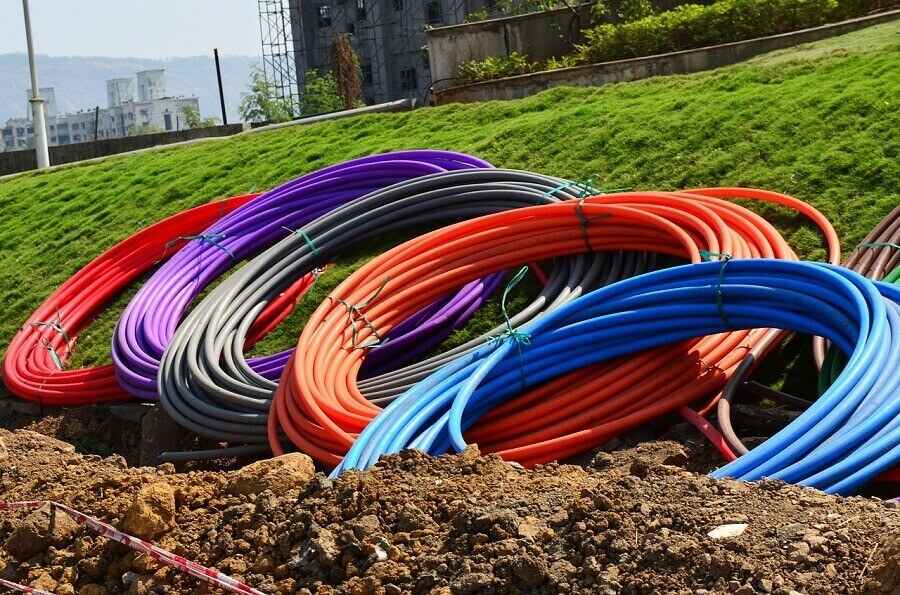An electrician or electrical engineer plans the layout of a house's electrical system, including the location of outlets, switches, and distribution boards, among other components.
Nonmetallic cable, consisting of two or more wires encased in plastic, is now the most popular kind of wiring used in contemporary residential construction. So it's crucial to choose the proper kind of wire and the right electrical conduit. With this fireproof electrical conduit, wires may be shielded from harm. Therefore, the purpose of this article is to provide a general understanding of what an electrical conduit is and the advantages it offers.
What is an electrical conduit?
The term "electrical conduit" refers to a tube used to conceal electrical wiring in a number of structural and construction contexts. As well as shielding the wires themselves, conduit also protects anybody who comes into contact with them. Wherever there are exposed electrical wiring, electrical conduit is a must for the safety of both the wires and anybody who could come into contact with them. This conduit is often made of metal or plastic and can be flexible or rigid depending on the use.
Almost every house and company make use of them, and they are essential for any exposed or outdoor wiring. Due to its primary function as a safety measure, the material, size, and fittings of these enclosures must be selected with consideration for both the installation's environment and the type of wire it will hold.
How does electrical conduit work?
The electrical conduit serves its purpose by preventing accidental electrocution in private residences and commercial establishments. Conduits are pipes that are used to securely transmit electrical electricity from one set of wires to another. A proper application for an electrical conduit is when physically running an electrical line or while rewiring a home.
Conduits for electrical wiring must be installed in accordance with certain standards, therefore it's important to double-check local ordinances before laying any down. The materials used to construct conduits vary widely from one use to the next, from fibre to metal to plastic to burned clay. Technicians in the field of electrical engineering or electrical installation work install them at the location where new devices will be connected to the grid.
Advantages of electrical conduits:
Damage or loss can occur in a number of different ways due to improperly handled energy. But electrical conduit shields wires from contact with anything combustible or conducting. In order to protect electrical wiring as well as audio, video, telephone, and internet cable, electrical conduit is used.
It is common practice to have a professional inspector go over a house or building addition before closing, to ensure that everything is "up to Code" and that the buyer and seller are aware of any deficiencies or violations of the safety code. This is due to the fact that a fire can be started if there is an excessive demand for electricity and the wire is old, damaged, or improperly placed, resulting in the wiring overheating or causing a spark.
New regulations may necessitate the installation of updated wiring or safety systems, even in older homes that have previously passed inspection. When upgrading an electrical system, new wires are often dragged through the old conduit rather than replacing it. Future upgrades are possible because of the large diameter of the electrical conduit.
Conduit, both rigid and flexible, is used to encase and protect electrical wire in walls and ceilings on construction sites. Indoor dry-area installations of flexible metal conduit are permitted. It safeguards the electrical connections that carry electricity from a main grounding and bonding circuit breaker box to the many devices that make use of that power (such as outlets, appliances, controllers, and lights). However, neither rigid nor flexible indoor conduit is watertight, thus condensation or other forms of moisture accumulation can damage electrical wire.
On the other hand, thermosetting plastic encases a metal or plastic core in liquid-tight, flexible conduit. The plastic sheathing shields the wires within from moisture, heat, and chemical corrosion. Burial of watertight electrical conduit below ground is permitted under the Code.
Because tree roots have a habit of penetrating buried power lines, several utilities suggest encasing the wires in plastic or plastic-jacketed conduit before burying them underground. The need for electricity poles and transformers installed on poles is eliminated when electrical wires are buried underground. Burying something helps protect it from the elements and prevents things like wind damage or power outages.
Wiring can be shielded from the damaging effects of the sun, wind, and other elements of harsh weather by using a conduit that is approved for use outside. This conduit may be utilised to connect a variety of different components, including air conditioners, solar panels, wells, antennas, heat pumps, boathouses, work sheds, garages, glasshouses, hot tubs, swimming pools, irrigation controllers, and outdoor sound and lighting systems.
As a final conclusion, we are able to draw from the facts presented above that electrical conduits are absolutely necessary for safeguarding the wire system in houses, structures, and commercial buildings from various hazards such as moisture, dust, chemical vapours, collision, and so on.
These are crafted using a variety of materials, including fibre, plastic, metal, and baked clay, among others. Although flexible types of conduits are utilised primarily for certain applications, the majority of conduits are rigid because they are more durable.






